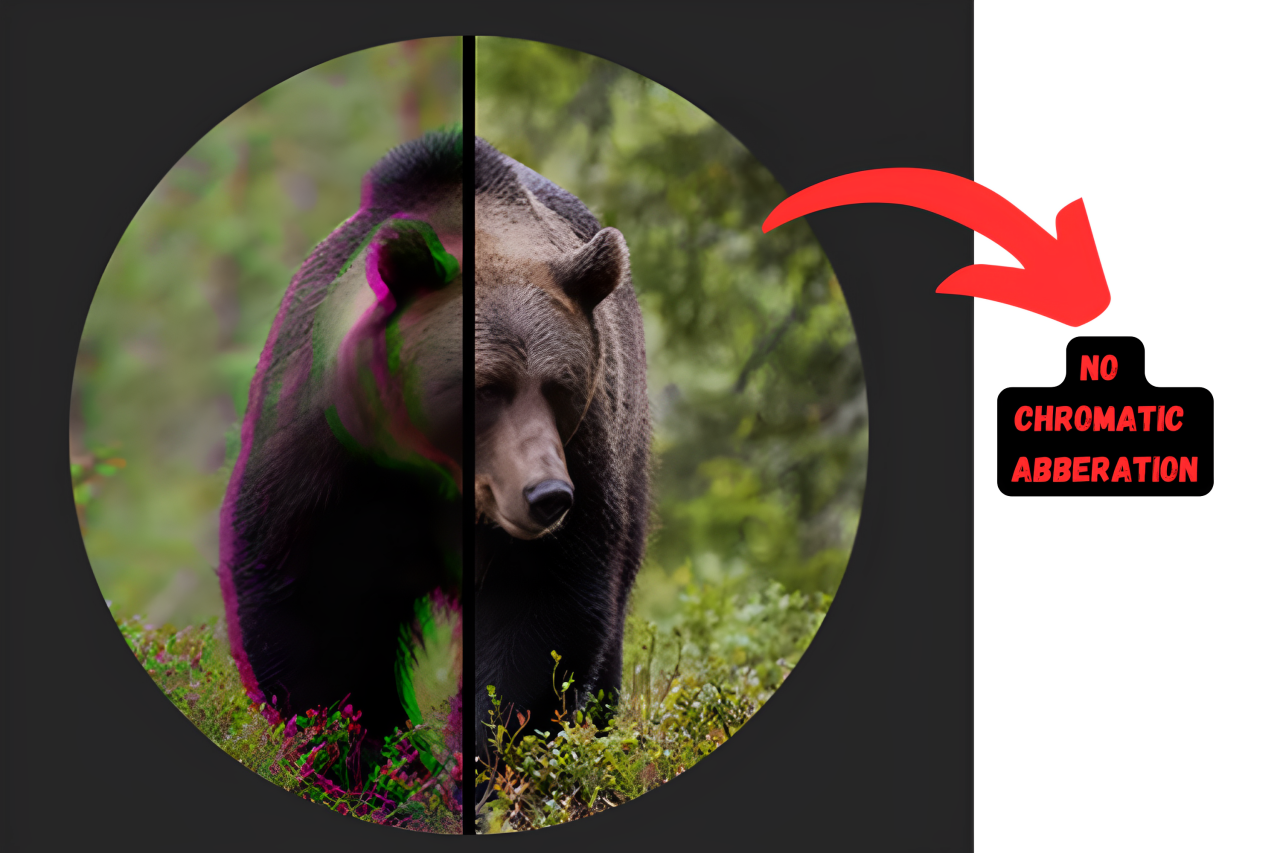
Introduction
Mastering the art of close and mid-range shooting requires precision, adaptability, and the right equipment. At the heart of this setup is the LPVO Scope (Low Power Variable Optic), a versatile tool that bridges the gap between red dot sights and high-magnification optics. Whether you’re a competitive shooter, a hunter navigating dense terrain, or a tactical enthusiast, optimizing your LPVO Scope can transform your shooting experience. This article dives deep into practical, field-tested strategies to fine-tune your LPVO Scope for peak performance at distances from 5 to 300 yards. From reticle selection to zeroing techniques, we’ll cover everything you need to dominate your target with confidence.
Understanding the LPVO Scope
The LPVO Scope is a game-changer in modern shooting. Unlike traditional scopes with fixed magnification, an LPVO Scope offers a variable magnification range, typically from 1x to 6x, 8x, or even 10x. This flexibility makes it ideal for engaging targets at both close quarters and mid-range distances. The 1x setting mimics a red dot sight for rapid target acquisition, while higher magnifications allow precise shots at extended ranges. To optimize your LPVO Scope, you must first understand its components—reticle type, turrets, illumination settings, and focal plane—and how they influence performance in dynamic shooting scenarios.
Key Features of an LPVO Scope
- Reticle Options: Choose between simple crosshairs, bullet drop compensators (BDC), or mil-dot reticles based on your shooting needs.
- First vs. Second Focal Plane: First focal plane (FFP) reticles scale with magnification, ideal for range estimation, while second focal plane (SFP) reticles remain constant, better for quick close-range shots.
- Illumination: Illuminated reticles enhance visibility in low-light conditions, critical for early morning hunts or tactical operations.
- Turrets: Exposed or capped turrets allow for quick adjustments, but ensure they’re durable for field use.
Selecting the Right LPVO Scope
Choosing the perfect LPVO Scope starts with defining your shooting purpose. For close-range shooting (5-50 yards), prioritize a true 1x magnification and a bright, illuminated reticle. For mid-range (50-300 yards), consider a scope with a 1-6x or 1-8x magnification range and a reticle designed for holdovers. Brands like Vortex, Trijicon, and Leupold offer reliable LPVO Scope models, but focus on optical clarity, durability, and weight. A lightweight LPVO Scope ensures your rifle remains maneuverable, especially in fast-paced scenarios like 3-gun competitions or home defense.
Factors to Consider
- Magnification Range: A 1-6x LPVO Scope is versatile for most applications, while 1-8x or 1-10x suits longer mid-range shots.
- Objective Lens Size: Larger lenses (24-30mm) improve light transmission but add weight.
- Durability: Look for shockproof, waterproof, and fog-proof designs to withstand harsh environments.
- Budget: Quality LPVO Scope models range from $300 to $2000. Invest in the best you can afford for reliability.
Mounting Your LPVO Scope Properly
A poorly mounted LPVO Scope can ruin even the best optic. Proper mounting ensures stability, eye relief, and alignment. Use a high-quality cantilever mount designed for LPVO Scope applications, as it positions the optic forward for optimal eye relief at 1x. Ensure the mount height allows a comfortable cheek weld—typically 1.5 inches from the rail to the scope’s centerline.
Steps for Mounting
- Secure the Mount: Attach the mount to your rifle’s Picatinny rail and torque to the manufacturer’s specifications (usually 15-20 in-lbs).
- Position the Scope: Place the LPVO Scope in the mount, adjusting for proper eye relief (3.5-4 inches at 1x).
- Level the Reticle: Use a bubble level to align the reticle with the rifle’s bore.
- Torque the Rings: Tighten the scope rings evenly, avoiding over-tightening to prevent tube damage.
- Check Alignment: Confirm the scope tracks vertically using a plumb line or leveling tool.
Zeroing Your LPVO Scope
Zeroing your LPVO Scope is critical for accuracy. For close and mid-range shooting, a 50/200-yard zero is ideal, as it minimizes bullet drop variation across these distances. Use a stable shooting platform, quality ammunition, and a target at your chosen zero distance.
Zeroing Process
- Set Up: Place a target at 50 yards and fire a three-shot group from a rested position.
- Adjust Turrets: Use the LPVO Scope’s windage and elevation turrets to move the point of impact to the point of aim. Follow the scope’s adjustment values (e.g., 1/4 MOA per click).
- Confirm Zero: Fire another three-shot group to verify the zero. Fine-tune as needed.
- Test at Mid-Range: Shoot at 200 yards to ensure the zero holds. Adjust if necessary.
- Record Settings: Note your zero settings for future reference, especially if you switch ammunition.
Reticle Selection and Usage
The reticle in your LPVO Scope is your aiming reference, and choosing the right one is vital. For close-range shooting, a simple dot or crosshair allows fast target acquisition. For mid-range, a BDC or mil-dot reticle enables precise holdovers. Practice using your reticle at different magnifications to understand its subtensions.
Tips for Reticle Mastery
- Learn Holdovers: If your LPVO Scope has a BDC reticle, memorize the hold points for common distances (e.g., 100, 200, 300 yards).
- Use Illumination Wisely: Activate the illuminated reticle in low-light conditions but avoid overpowering brightness that washes out the target.
- Practice Transitions: Switch between 1x and higher magnifications to build muscle memory for dynamic shooting.
Adjusting Magnification for Speed and Precision
The LPVO Scope shines in its ability to adapt to varying distances. At close range, keep the scope at 1x for a wide field of view and rapid target engagement. For mid-range, dial up to 4x or 6x for better precision. Use a throw lever for quick magnification changes, especially in competitive or tactical scenarios.
Magnification Tips
- Close Range (5-50 yards): Stay at 1x to mimic a red dot sight. Focus on speed and both-eyes-open shooting.
- Mid-Range (50-300 yards): Increase magnification to identify targets clearly and place precise shots.
- Train Transitions: Practice zooming in and out while maintaining sight picture to reduce reacquisition time.
Training Drills for LPVO Scope Proficiency
Optimizing your LPVO Scope isn’t just about setup—it’s about skill. Incorporate these drills into your training to master close and mid-range shooting.
Drill 1: Close-Quarters Engagement
- Setup: Place targets at 10, 25, and 50 yards.
- Execution: Start at 1x, engage each target with two shots, moving between positions. Time yourself.
- Goal: Improve speed and accuracy under pressure.
Drill 2: Mid-Range Precision
- Setup: Set targets at 100, 200, and 300 yards.
- Execution: Dial to 4x or 6x, fire three shots per target, using holdovers or turret adjustments.
- Goal: Refine holdover skills and shot placement.
Drill 3: Magnification Transitions
- Setup: Place targets at 25 and 200 yards.
- Execution: Engage the close target at 1x, then zoom to 6x for the mid-range target. Repeat under a timer.
- Goal: Master smooth magnification changes.
Maintaining Your LPVO Scope
A well-maintained LPVO Scope performs reliably in any condition. Regular maintenance prevents issues like fogging, scratches, or turret malfunctions.
Maintenance Tips
- Clean the Lenses: Use a microfiber cloth and lens cleaner to remove dirt and smudges. Avoid abrasive materials.
- Check Mounts: Periodically inspect mount screws for looseness, especially after heavy recoil.
- Store Properly: Keep your LPVO Scope in a padded case when not in use to protect it from impacts.
- Test Functionality: Before each shooting session, verify turret tracking and illumination settings.
Common Mistakes to Avoid
Even experienced shooters can misuse an LPVO Scope. Avoid these pitfalls to maximize performance.
- Over-Magnification: Using high magnification at close range slows target acquisition. Stick to 1x for CQB.
- Improper Zero: A poorly zeroed scope leads to missed shots. Always confirm your zero at multiple distances.
- Neglecting Training: An LPVO Scope is only as good as the shooter. Regular practice is non-negotiable.
- Cheap Mounts: A flimsy mount can shift zero. Invest in a reputable brand like Aero Precision or LaRue Tactical.
Conclusion
Optimizing your LPVO Scope for close and mid-range shooting unlocks its full potential, making it a powerhouse for any shooter. By selecting the right scope, mounting it correctly, zeroing with precision, and training diligently, you’ll gain the confidence to tackle any scenario. The LPVO Scope’s versatility—seamlessly transitioning from rapid close-quarters shots to accurate mid-range engagements—sets it apart as a must-have optic. Commit to regular maintenance and practice, and your LPVO Scope will serve you reliably for years. Now, hit the range, apply these techniques, and watch your shooting skills soar.




